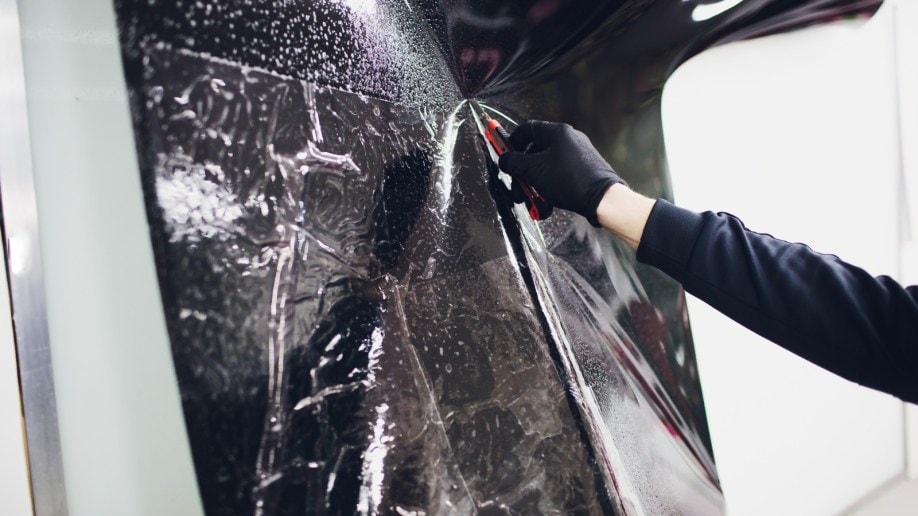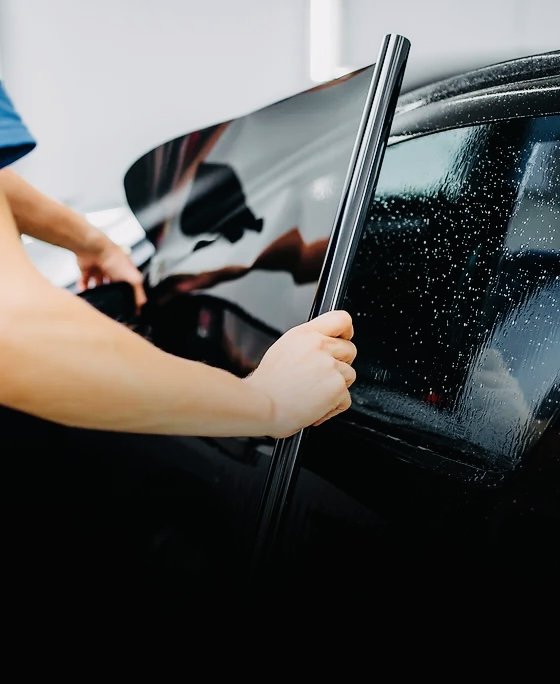A Comprehensive Overview to Solutions Used With Home Window Tint Solutions
Home window tinting has actually become a crucial solution for both residential and commercial settings. It uses different films created to satisfy particular needs, such as warmth reduction and personal privacy improvement. Recognizing the variety of choices available is crucial for making notified choices. This guide will check out the various sorts of window tinting movies, their advantages, and the setup process. It will certainly also resolve legal considerations that may influence your options. What elements should one consider prior to continuing?
Kinds Of Home Window Tinting Films
Window tinting movies can be found in various types, each made to meet specific needs and choices. One of the most usual types consist of dyed, metalized, ceramic, and crossbreed films. Dyed movies give a standard level of personal privacy and heat decrease, using a dye layer to take in heat. Metalized films incorporate tiny metallic bits, using boosted heat denial and glow decrease while also including toughness. Ceramic films attract attention for their superior efficiency, as they block warm without disrupting signal transmission, making them excellent for digital gadgets. Crossbreed films integrate aspects of both dyed and metalized movies, giving an equilibrium between visual appeal and functional benefits. Each movie type differs relating to light transmission, UV protection, and warranty alternatives, permitting consumers to choose an option that straightens with their certain requirements and design choices. Recognizing these choices is necessary for making an informed decision when thinking about window tinting services.
Benefits of Residential Window Tinting
Residential home window tinting offers an array of advantages that improve both comfort and energy effectiveness in homes. Among the main advantages is the decrease of warm gain, which leads to decrease energy expenses by decreasing the reliance on air conditioning systems. Additionally, window tinting helps to obstruct hazardous UV rays, protecting both occupants and home furnishings from sun damages and fading.Moreover, it enhances personal privacy without endangering natural light, permitting property owners to enjoy their views while maintaining spying eyes at bay. The application of home window film additionally improves safety and security by holding shattered glass in position throughout tornados or accidents, therefore decreasing injury risks.Furthermore, household window tinting can contribute to a much more aesthetically pleasing outside, as different film choices are available to match different architectural styles. Generally, these benefits make window tinting a practical and useful financial investment for house owners seeking enhanced livability and power performance.
Benefits of Business Window Tinting
While numerous services look for methods to improve their workplace, industrial window tinting offers a wide range of advantages that can significantly improve both employee comfort and operational effectiveness. One key advantage is the decrease of glare, which can substantially enhance productivity by permitting staff members to function without disturbances from rough sunshine. Additionally, home window tinting can aid control interior temperatures, bring about lowered reliance on air conditioning and lower power costs.Furthermore, colored home windows use UV security, shielding staff members and home furnishings from unsafe rays that can create skin damage and discolor materials. This defense not just adds to a healthier workplace yet also prolongs the life of office insides. Ultimately, business window tinting can boost personal privacy, permitting companies to preserve a professional look while minimizing outside distractions. In general, these advantages make commercial home window tinting a valuable investment for services intending to maximize their office.
The Home Window Tint Setup Process
A successful window tint setup process includes numerous key actions to guarantee excellent outcomes. The area and windows should be thoroughly cleaned up to remove dust, grease, and any kind of other contaminants that could affect adhesion. Next, the tint film is thoroughly determined and reduced to fit the details dimensions of each window.Following this, the installer applies a remedy to the glass surface area to permit repositioning of the film before it sticks. The film is after that put onto the window, seeing to it it is without wrinkles and bubbles. As soon as positioned correctly, a squeegee is used to remove excess water and air.Finally, the edges of the movie are trimmed for a neat coating, and the installation is inspected for high quality. Correct attention to these steps ensures the longevity and performance of the window color, boosting both looks and capability.
Maintenance and Look After Your Home Window Color
How can one ensure the longevity and look of home window tint? Proper maintenance and treatment are important. Initially, it is recommended to wait at least thirty days after setup prior to cleaning up the tint to allow for proper adhesion. Once this duration mores than, utilizing a soft cloth or microfiber towel can prevent scratches while cleaning. Mild, ammonia-free cleansers should be utilized to avoid damaging the film.Regular inspections of the edges and surface can aid identify any bubbling or peeling early, permitting for timely repair work. Avoid utilizing abrasive materials or severe chemicals that could weaken the color. Furthermore, parking in shaded areas or utilizing sunshades can minimize UV direct exposure, more shielding the tint's honesty.
Legal Considerations for Home Window Tinting
Lawful considerations for home window tinting vary significantly throughout different states. Each state has particular regulations concerning noticeable light transmission restrictions, which determine exactly how much light can pass through tinted windows. Furthermore, some states offer medical exemptions, enabling people with certain conditions to utilize darker tints than generally allowed.
Tinting Rules by State
While window tinting can improve a lorry's appearances and give additional privacy, it is crucial for vehicle owners to recognize the differing regulations that regulate tinting throughout various states. Each state has its very own details legislations relating to the allowable levels of color darkness, representation, and the kinds of windows that can be tinted. As an example, some states enable darker tints on back windows yet enforce more stringent restrictions on front side windows. Furthermore, specific states may need certain tags or certifications to verify compliance. Falling short to stick to these policies can result in penalties or the requirement to get rid of the color (Davinci of Michigan Window Tinting). Subsequently, lorry proprietors must investigate their state's legislations before purchasing home window tinting services
Noticeable Light Transmission Purviews
Comprehending the visible light transmission (VLT) restrictions is essential for any person taking into consideration window tinting. VLT refers to the percentage of noticeable light that can pass with the tinted glass. Various states have varying policies regarding appropriate VLT levels, specifically for different home windows in automobiles. Front windscreens commonly have more stringent limitations contrasted to side and rear home windows. Breaking these regulations can result in fines and the requirement to get rid of non-compliant tinting. Consequently, it is essential for people to research their state's particular VLT regulations before continuing with window tint installation. Conformity guarantees not only lawful adherence however additionally security and presence while driving, advertising a much safer setting for all roadway users.
Clinical Exceptions for Tinting

Selecting the Right Home Window Tinting Service
Selecting the right window tinting solution involves a mindful evaluation of individual tinting demands. It is vital to assess various solution options, ensuring they align with the wanted results. In addition, understanding the legal regulations regulating home window tinting can assist avoid possible issues down the line.
Examining Tinting Needs

Evaluating Solution Options

Recognizing Lawful Rules
Prior to selecting a home window tinting solution, individuals need to recognize the legal policies governing tinting in their area, as these legislations can vary substantially in between states and municipalities. Each territory might impose particular limitations on the allowable color darkness, reflective residential properties, and which home windows can be tinted. Some states might allow darker colors on rear home windows while forbiding them on front home windows. Furthermore, policies usually outline the kinds of products that can be used and might call for certain labeling or accreditation. Failure to abide by these legislations can result in fines or the demand to eliminate the color. Prospective consumers ought to confirm the legality of their preferred color and speak with experts familiar with neighborhood laws to ensure compliance.
Frequently Asked Inquiries
For How Long Does Home Window Tinting Commonly Last?
The durability of home window tinting usually ranges from 5 to 10 years, depending on aspects such as the quality of the movie, installation procedure, and ecological conditions. Normal maintenance can also affect its life-span substantially.
Can Home Window Tinting Be Removed Easily?
The convenience of home window color removal relies on the setup technique and glue made use of. Typically, specialist solutions assure safer, cleaner elimination, while DIY attempts may result in damage to the glass or adhesive residue.
Will Window Tinting Affect My Home's Resale Value?
Home window tinting can influence a home's resale value positively or negatively. Possible customers might value power cost savings and personal privacy, while others may see it as an individual preference, influencing general allure and worth of the residential property.
Exist Eco-Friendly Window Tinting Options Available?
The questions concerning eco-friendly home window tinting alternatives exposes that numerous makers currently offer products making use of lasting products. These alternatives can reduce power intake and improve convenience while straightening with eco aware methods in home enhancement.
Can Home Window Tinting Aid With Power Performance?
Home window tinting can substantially improve energy performance by lowering heat gain and loss. This assists maintain comfortable interior temperature levels, potentially decreasing heating and cooling costs, while also adding to a much more sustainable environment via decreased power intake. The application of home window movie additionally enhances safety and security by holding destroyed glass in area during accidents or tornados, therefore minimizing injury risks.Furthermore, residential window tinting blog here can add to a more cosmetically pleasing outside, as numerous film alternatives are offered to match different architectural styles. In addition, window tinting can help regulate interior temperature levels, leading to decreased reliance on air conditioning and reduced energy costs.Furthermore, colored home windows provide UV protection, securing employees and home furnishings from harmful rays that can create skin damage and fade products. Some states permit darker colors on rear home windows but impose stricter restrictions on front side windows. Before picking a home window tinting service, individuals have to understand the lawful regulations governing tinting in their area, as these laws can vary significantly in between states and districts. Some states may permit darker tints on back windows while banning them on front windows.